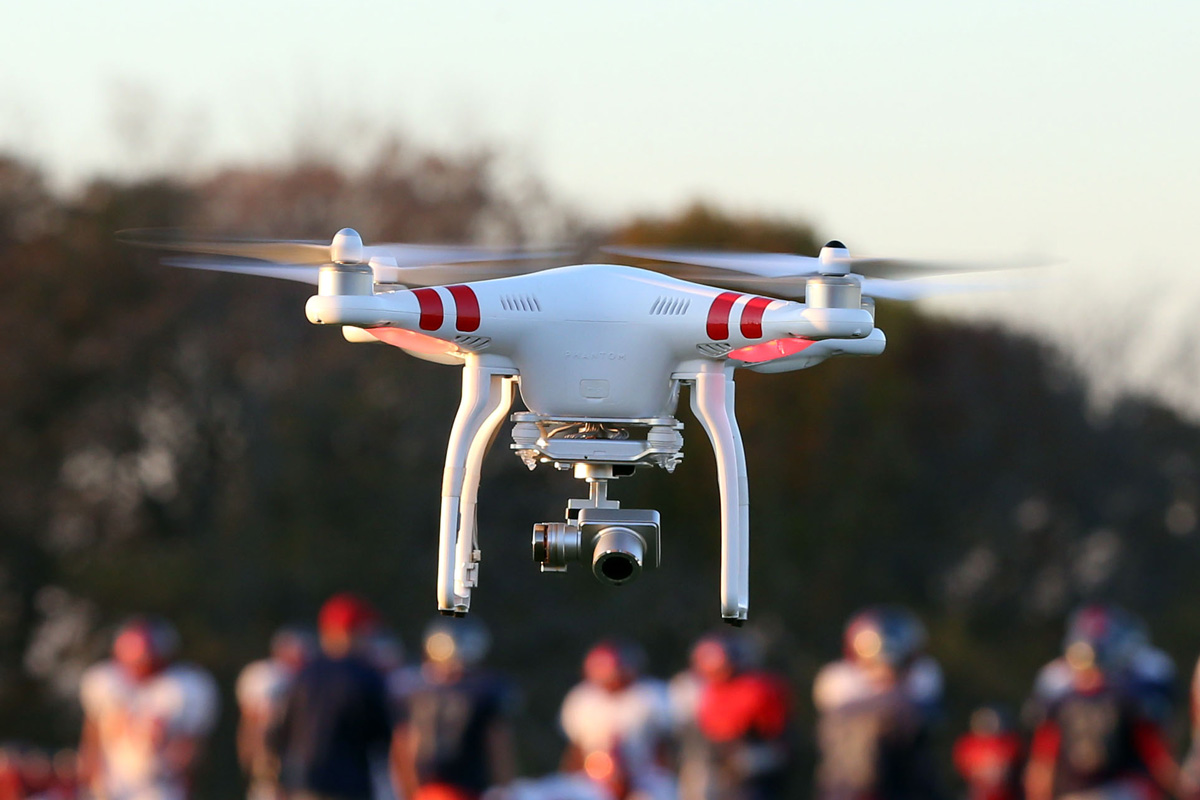Three days ago, Chicagoan Colin Hinkle released a video: “Chicago: A Bird's Eye View VII—Summer in the City.” The four-minute aerial film, shot using a commercial drone, quickly became an internet sensation, with outlets such as WGN-TV and Curbed Chicago picking it up (not to mention your Facebook feed). Hinkle's video is just the latest to capture the city by drone—here's a video of the Blackhawks parade, and here's one of Northalsted Market Days last year.
Heading into the Fourth of July weekend, you can imagine the next film videographers will be droning in: the fireworks. The past few years has seen a ton of clips of fireworks shows shot by tiny cameras strapped to drones flying directly into the explosions, capturing them from a perspective that was previously impossible to see. A YouTube search for “drone fireworks” calls up more than 80,000 hits of first-person pyrotechnic bliss.
But what would happen in the rare—but entirely possible—case that drone and firework collide?
According to experts, the result could be as harmless as a dent in your aircraft or as dystopian as a ball of fire, depending on your luck.
Recreational drones—the kind you’d strap a GoPro to—are powered by lithium-ion polymer (LiPo) batteries. They’re the same type of slim, rechargeable bricks that power smart phones—and they’re extremely flammable, says Arthur Holland-Michel, co-director of the Center for the Study of the Drone at Bard College in New York.
“If a firework were to set a LiPo battery alight, then the drone would be engulfed in flames,” he explains. That could be particularly dangerous if the fireworks were taking place on land, but the chances of a spark landing on the battery are low.
“There have been a couple of incidents where embers from fireworks have sort of bounced off drones and haven’t caused much damage,” Holland-Michel says. “But once you break a propeller—even one—the drone is in trouble.” Propellers are usually made of fragile carbon fiber or plastic.
Damage to the drone’s computer is another possible risk. “The percussion from the shockwave could damage sensory equipment such as gyroscopes and accelerometers, which could cause a crash,” says photographer Matt Makris of Chicago Aerial Photography. “The heat from the explosion could burn or melt electrical equipment and/or the airframe.”
A flaming mass has yet to fall from the sky as a result of drone videography—at least as far as you can find on YouTube—but that hasn’t stopped the FAA from pursuing those bold enough to upload their adventures online. Following a 2014 GoPro flick that racked up more than 11 million views on YouTube, the aerospace authority investigated multiple incidents in which UAV flew into fireworks displays.
Laws governing the personal use of drones are still fairly loose. The FAA requires only that drones stay under a 55-pound weight limit, be flown "a sufficient distance" from populated spaces and kept within the line of sight of the pilot, and not be used in “a careless or reckless manner.” The Chicago Park District has drone regulations in the works, but no citywide restrictions have been set yet.
“Unless the operator has applied for, and received, an exemption, UAS must follow recreational rules as found on knowbeforeyoufly.org,” the FAA added in a statement.
Hinkle has an exemption for his aerial photography business, Soaring Badger Productions, which allows him to take drone-powered videos for commercial use. Even so, he says he wouldn’t dare fly a drone near fireworks.
“I had a client recently ask me if I could do that. I had to tell him, ‘I understand that you saw the video and it’s very neat, but it’s just far too dangerous,’” he says. “It’d be like flying over some neighbor’s property that you know has a gun.”
Luckily, most Chicagoans won't have to worry about flaming drones on the Fourth—Navy Pier officials say they’re banned this year. But with so many fireworks show going off across the suburbs (and the country), it's still a possibility.



